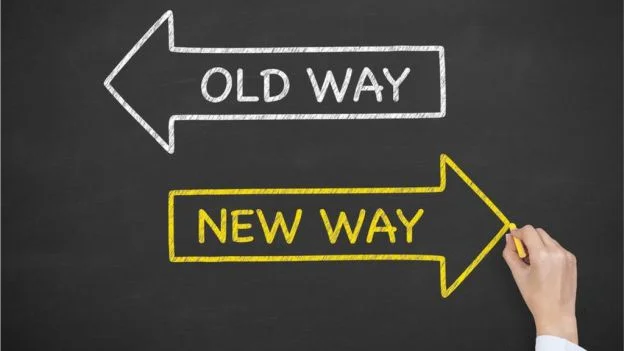by Leigh Ann Gowland, founder of Employee Driven Change
If you were an artist creating delicate glass sculptures, how would you display your masterpiece to the world? A labour of love would be packed carefully and only displayed to art lovers. In an era of disruption, agility and demands for fast change, entrepreneurs are continuously pivoting, re-inventing and introducing new ideas. An aggressive, urgent launch of an idea could be risky. Take some time to prepare for the impact of change. Handle with care when disrupting.
Unfortunately, proclaiming an idea as the next big thing doesn’t ensure widespread adoption. Not everyone thinks disruption or change is cool. Before an idea can be realized, you need to address the change challenges. There is not always time or the resources to follow a structured, carefully planned approach to introducing change. But this should not prevent disruptors from managing change. Here are some thoughts to prepare you for difficult conversations to promote buy-in to the change.
Is your purpose clear?
Art is acquired for investment, preservation of history, to make a statement or for decoration. Does the audience understand what the artist intended to say? Be sure the purpose of the change or new idea is clear for your audience. The bigger the reason for change, the bigger the initial excitement for the change. You are competing for the attention of your target audiences. Why should they focus on your idea and ignore another? What makes your change more beneficial to them than another idea? Or even what makes the change more attractive than maintaining the status quo.
Prepare your facts
Michelangelo and Leonardo Di Vinci had their critics. You need to prepare for yours. To build momentum of the change prepare a solid case for change including benefits of the change, opportunities the change creates and supporting evidence of successes. These are your facts to address resistors and sceptics. Resistors may consider your idea bad but maybe only because they do not understand it yet.
Adapt to the context
The Louvre displays their art according to periods, styles and sometimes geographies; not everyone appreciates the same art. By understanding the context of the change this will help focus effort to drive the change within the current circumstances. Within a given context, can you create an image of your change in the minds of others? A vivid description of the change in language understood by the audience will help the change become an aspiration or reality for those impacted.
Success measures
Several Michelangelo's works of painting, sculpture and architecture are considered some of the most famous in existence while Van Gogh's works are among the world's most expensive paintings. Both artist would be considered successful but how do you want your change to be remembered? Articulate practical measurements of key criteria of a success for your change. Measurement of progress helps maintain momentum but a clear vision of the outcome of the change maintains focus.
Continuously manage the impact
Art inspires, communicates and evokes emotions. You may never know what your change could trigger or inspire in the community or market. Be prepared to manage unintended consequences. Partner with groups of people to gather feedback and understand the effect of the change and how to manage this to deliver value. Listening shouldn’t stop once you’ve decided on a course of action. Pay special attention to new information, they often hold the clues to move you forward toward better versions of your idea. Recognize that you will likely need to update your idea regularly to eventually find your way to success.
Whether your work is the ceiling of the Sistine Chapel or one of about 2,100 of Van Gogh artworks, your idea may be ahead of its time. Don’t allow the critics of the time discourage or destroy your ideas. Careful planning and managed introduction could not only increase likelihood of success but how widely it is adopted.
Leigh Ann Gowland is an independent change management consultant and the founder of Employee Driven Change, and assists companies with large change initiatives while making change work for individuals. With fifteen years of experience in change management, human resources, and workforce transformation, she understands individual and business change across industries, projects and corporate cultures. Her approach to consulting and coaching styles is informed by Systems Theory and her passion for empowering others to understand and drive change and apply these skills.
www.employeedrivenchange.co.za
More articles by Leigh-Ann...











